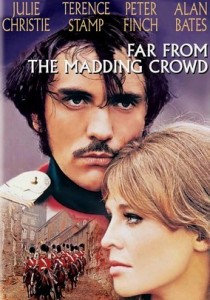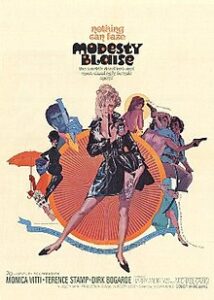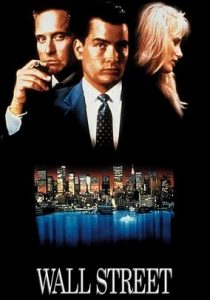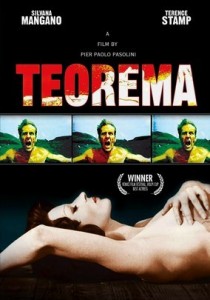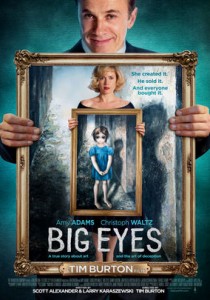Far from the Madding Crowd-1967
Director John Schlesinger
Starring Julie Christie, Terence Stamp, Alan Bates
Top 250 Films #183
Scott’s Review #315
Reviewed January 1, 2016
Grade: A-
A sweeping, gorgeous epic made in 1967, Far from the Madding Crowd is pure soap opera (this is not a negative), done very well, featuring a woman with three male suitors and many similarities to another brilliant epic, Gone with the Wind (1939).
The cinematography, score, and writing are excellent, and at close to three hours, it is a lengthy experience.
The film is based on the popular novel written by Thomas Hardy.
The setting is lovely, rural England, the landscape green and lush- mostly farmland, where Bathsheba resides, having recently inherited her Uncle’s enormous estate and is, frankly, overwhelmed with the heavy responsibility required to run it successfully.
Three men appear in one form or another to lend a hand, and each falls madly in love with her- she had her choice of any of them. Throughout the film, each is given a chance to win her heart, and each faces trials and tribulations.
The wealthy neighbor, William Boldwood, is older and insecure. Frank Troy is a bad boy who is a cavalry sergeant, and Gabriel, a former farmer, has lost all of his sheep.
Having only seen this film twice (so far), I notice more and more the similarities to Gone with the Wind. Both are set around the same period (the 1860s), and both films feature powerful, independent, gorgeous female characters with multiple male suitors.
Unlike Gone with the Wind, though, Bathsheba is not self-centered, but wholesome and honest.
Julie Christie was undoubtedly the “it” girl during the time the film was made, having recently starred in Darling (1965) and Doctor Zhivago (1965), among others, and Far from the Madding Crowd is a perfect film for her, focusing on her beauty and earnestness.
She is exceptionally cast.
What I enjoy most about the film is that we do not know which of the men Bathsheba will wind up with…if any of them. Gabriel (Alan Bates) is my personal favorite, but at the beginning of the film, she rebuffs his marriage proposal.
In a heartbreaking scene, one of his dogs goes mad and leads his entire flock of sheep to their death. He is then forced to work as her shepherd, a job beneath him. He is the most likable of the three men, and it is fun to root for their ultimate union. But is he prone to bad luck?
Frank Troy is dashing- a clear lady’s man, yet I did not root for him. A character, whom I found to have strange motivations, impregnated and almost married a young lady named Fanny, only to turn her away based on a misunderstanding, then ultimately changed his mind about Bathsheba.
In one scene, he manipulates the citizens into getting drunk on brandy, which leads to a crisis. He is charismatic and used to getting his way.
Finally, Boldwood is wealthy, sophisticated, and appealing to Bathsheba in a certain way (primary stability). Still, there is also something I find “off” about the character throughout the film- unstable, maybe, needy? I did not find his character likable either.
The overlap and the relationships between the men are also interesting aspects of Far from the Madding Crowd. Will they become friends? Would they kill each other for Bathsheba’s affection?
Many emotions run through all four characters, which makes the film rich in character development.
Grand, sweeping, and beautiful are words that describe Far from the Madding Crowd, a film I enjoy exploring and evaluating with each viewing.
Oscar Nominations: Best Original Music Score
